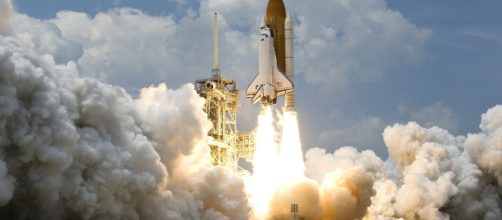NASA is building the space launch system (SLS), the biggest and most powerful rocket ever. The rocket is said to be capable of interplanetary travel and is expected to pave the way for sending humans to Mars. The agency is serious about the matter, in fact, it successfully finished the 3rd test of the rocket's RS-25 engine last July 25.
SLS rocket engine test
The completed test was the third for the engine. In order to measure its capability, it was fired for 8.5 minutes at NASA's Stennis Space Center in St. Louis, Mississippi. NASA couldn't be more proud of this achievement calling it an equivalent to "clean inning" in baseball.
According to Space.com, the RS-25 flight controller is designed to take the SLS rocket to deep space including Mars.
With the powerful rocket, the agency will be able to push forward with deeper space exploration missions called Exploration Mission-1 or EM1. This mission aims to take humans beyond the Earth's orbit and on other planets within the Solar System. SLS is fitted to carry the Orion capsule. The Orion then will help transport the crew and humans in deep space.
In order to make the SLS rocket operational, it requires four RS-25 engines to fire simultaneously providing 2 million pounds (900,000 kilograms) of thrust. In addition, two other solid rocket boosters to lift the rockets are needed to produce 8 million (3.6 million kilograms) pounds of thrust.
Rocket Engine
Aerojet Rocketdyne produces the RS-25 rocket engines in partnership with NASA. They are also being developed in line with the EM-1 mission. An interesting trivia, the make of the RS-25 engines are from the former space shuttle engines fitted with new flight controllers.
The controllers are considered as the "brain" of the engine, according to a NASA official. It will provide precise control of the operation and diagnostics of the engine. The flight controller will also allow the exchange of communication between the engine and the SLS rocket. Critical command and data will be transported back and forth from the controller to the SLS computer all throughout the flight including engine health and status data.
Before the 3rd attempt, the engines were also tested successfully last March and May earlier this year. The tests are conducted in preparation for the proposed 2019 launch for EM-1. The first launch of the SLS with the Orion spacecraft will be unmanned and will only test the capability of the system. Future missions are expected to carry astronauts to deep space.


